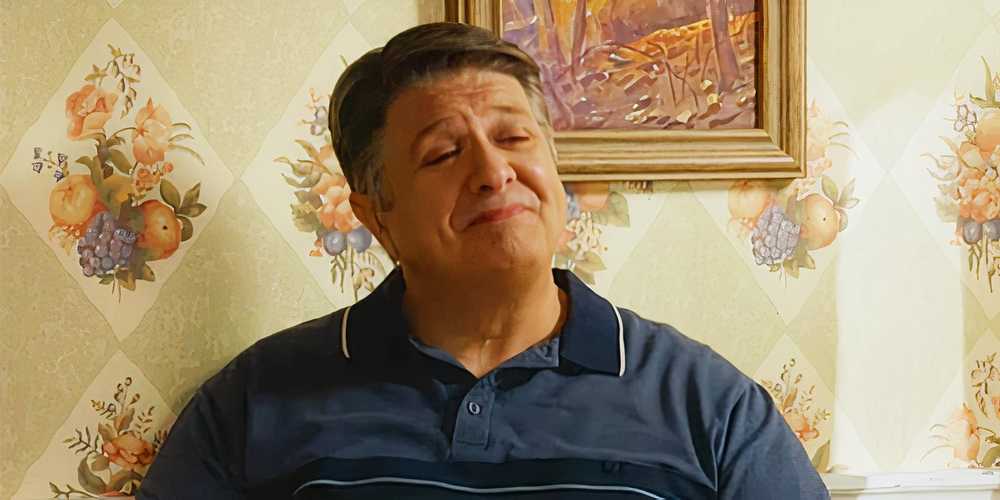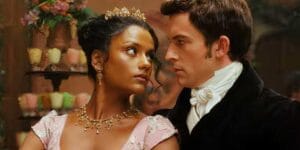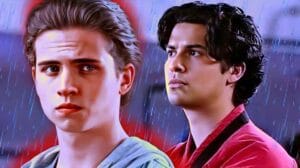This article shares my thoughts on one major flaw in the latest episode of Georgie & Mandy’s First Marriage. I really dislike one specific aspect of Lance Barber’s return as George in this show. While many fans feel warm nostalgia at his comeback, one creative decision—the zombie jump scare—interrupts an otherwise touching reunion. I will explain how Barber’s Return As George In Georgie & Mandy’s First Marriage was handled, what parts of the story worked well, and why the jump scare weakens the overall impact.
The episode, titled “Typhoid Georgie,” mixes humor with sadness as it shows the family’s struggle with loss. Since the character of George had died in earlier episodes of Young Sheldon, the writers needed to find a new way to bring him back. They chose to do this through a feverish dream experienced by Georgie. This choice shows how deeply the loss has affected the family. Even though this method has promise, one detail—the unexpected zombie jump scare—feels out of place and takes away from the emotional reunion.
Below, I break down different parts of the episode, look at the creative choices made by the writers, and explain why the jump scare disrupts the overall scene.
How George’s Return Fits Into the Story
Bringing back George in Georgie & Mandy’s First Marriage was a bold move. Because his death was shown in Young Sheldon, his sudden return needed a creative explanation. The writers decided that the character would appear as part of a fever dream experienced by Georgie. This shows that George is not coming back in a literal way, but as a part of Georgie’s inner thoughts and feelings.
Georgie Dreams of His Father
In the episode, Georgie is overwhelmed by stress and sickness, and he begins to dream about his father. This scene lets us see how much the loss of George has hurt him. In his dream, Georgie replays memories and imagined talks with his father. Using a dream sequence to reintroduce George gives us a view into the mental and emotional struggle of the Cooper family. Even though we see George in this way, it remains clear that his appearance is a creation of Georgie’s troubled mind. The method shows the impact of grief and the character’s lasting influence on his son. Yet, one moment—the jump scare—stands out as a clear misstep.
The Problem with the Zombie Jump Scare
The scene where George returns has a moment that takes a very different tone from the rest of the episode. The zombie jump scare catches the audience off guard at a time when a quiet and heartfelt moment was needed. This shock is meant to surprise viewers but ends up taking away from the deeper meaning of the reunion.
An Out-of-Place Gimmick
The jump scare occurs right in the middle of a scene that deals with deep loss and emotion. Many fans expected a gentle, reflective look at a father and son’s connection instead of a sudden, horror-like moment. Although some viewers might enjoy an unexpected twist, this choice disrupts the scene’s careful build-up. The sequence had already created tension and vulnerability through Georgie’s fever dream, only to be pulled in a different direction by a sudden horror element.
This abrupt change makes it difficult to stay connected with the story. The show had built the scene to honor a cherished character, but the jump scare distracts from that focus. The shift in tone weakens the impact of the reunion, as it seems more like a trick than a natural part of the story. The moment loses the chance to explore the lasting bond between father and son, leaving the audience unsettled.
The Impact on the Episode’s Emotion
George’s return was meant to be a heartfelt moment, showing how much his loss still affects the family. In Young Sheldon, George’s farewell was handled with a mix of humor and sadness. Even though fans expected his death, it still brought a strong emotional punch. That episode managed to balance laughter with genuine grief, creating a lasting impression on viewers.
A Touching Goodbye Undermined
The fever dream in Georgie & Mandy’s First Marriage had the potential to honor George’s memory and explore the pain of his absence. The scene could have shown Georgie dealing with the void left by his father and the promise he made to never let him down. Instead, the sudden jump scare changes the focus. What was meant to be a quiet and reflective encounter is turned into a moment of shock that pulls the viewer out of the experience.
The idea was to let the audience see a young man struggling with grief while facing the weight of responsibility. Instead of a gentle farewell filled with memories and sadness, the unexpected horror element overshadows the emotional content. The jump scare interrupts the flow of the scene, replacing a chance for connection with a moment that feels out of place. This not only distracts from Georgie’s internal struggle but also diminishes the tribute to a character who once played an important role in the family.
Reflections on the Narrative and Family Dynamics
The story of Georgie & Mandy’s First Marriage has many layers. The writers had the challenge of bringing back a character who was already gone, while respecting the family’s established emotions. George’s return shows how the absence of a loved one can continue to influence everyday life.
Coping with Loss and the Family’s Pain
For Georgie, the dream sequence is a way to deal with his father’s death. His inner struggle is shown through his dreams, which reveal the lasting pain and pressure he feels. The scene gives us a look at how the memory of a father can haunt someone long after he is gone. The dream is not just a creative trick; it is a mirror of the deep emotions that the family carries with them.
However, when the zombie jump scare appears, it disrupts this exploration of loss. The moment feels like an unnecessary attempt to inject shock value into a scene that should focus on real emotions. The use of a horror element in a story about family pain and responsibility does not add to the narrative. Instead, it feels like a distraction that removes the viewer from the honest portrayal of grief.
The Weight of a Father’s Legacy
George was more than just a character in the story. He represented values, expectations, and the influence that shaped the family’s lives. For Georgie, the return of his father in a dream is a reminder of the promise he made to live up to his memory. This promise carries a heavy burden, as it represents both admiration and fear of letting his father down. The dream sequence was an opportunity to show this internal conflict in a vivid way.
By adding the zombie jump scare, the scene loses its chance to deeply explore these feelings. Instead of a nuanced look at the relationship between father and son, the focus shifts to an element that feels like a cheap trick. The dream should have been a space for raw emotion, not a moment interrupted by something that belongs to another genre entirely.
Other Notable Aspects of the Episode
Despite the misstep with the jump scare, the episode contains several well-crafted moments. The mix of humor and sadness, along with strong acting and visual storytelling, makes the episode worth watching. The show still manages to bring out the complexity of family life even when the narrative experiments with different tones.
Strong Performances and Visual Storytelling
Lance Barber’s brief return as George carries warmth and familiarity, reminding us of why the character is so beloved. His presence in the fever dream adds a sense of continuity to the story, connecting the past with the present. Other actors in the show also deliver solid performances, which helps to ground the more fantastical elements in reality.
The visual style of the episode also plays an important role. Close-ups of Georgie’s face, thoughtful camera angles, and careful lighting all contribute to a mood that suits the theme of loss. These details help to create a visual language that speaks to the internal struggles of the characters. Even though the jump scare disrupts this visual narrative, the rest of the episode shows a deep commitment to exploring the family’s pain in a respectful way.
A Delicate Balance Between Humor and Heart
Georgie & Mandy’s First Marriage tries to find the right balance between comedy and drama. The show often shifts between lighthearted moments and scenes of real emotion. This mix of tones is one of the reasons the story feels so relatable to many viewers. Yet, blending these tones is a difficult task. When elements from one style overpower the other, it can feel like the scene loses its focus.
The jump scare in this episode is a clear example of this challenge. It takes a moment that was meant to be a quiet exploration of grief and replaces it with a shock tactic. This change in tone creates an imbalance that distracts from the emotional truth of the narrative. Fans who have followed the story for a long time may feel that this move undermines the careful storytelling that has been built over many seasons.
Examining Creative Decisions in Storytelling
Every decision in making a show carries risks. The choice to bring back a character through a fever dream is one of those risks. The writers aimed to honor a well-loved character while also pushing the story forward. This method, on its own, has a lot of potential. It allows for a rich exploration of the characters’ feelings and the impact of loss.
The Role of Surprises in a Story
The idea behind the jump scare was to add a surprising element to the scene. Some fans might see a benefit in a twist that jolts the audience out of their expectations. In other cases, a sudden twist can open up new ways to look at familiar characters. Here, though, the twist does not seem to fit with the overall mood of the reunion. The shock is not used to reveal a deeper truth about the characters but rather to create a moment of cheap surprise.
This choice divides viewers. Some may appreciate the effort to experiment with storytelling, while others feel that it detracts from the emotional weight of the scene. The risk taken by the creative team shows that they are willing to explore new directions, yet it also highlights the fine line between innovation and distraction.
The Need for Consistency in Tone
The return of George was planned as a respectful nod to the past. The tone was set to honor the memory of a character who once held an important place in the family. When the narrative suddenly shifts into a horror-like moment, the overall consistency of the tone suffers. The family’s pain, which had been built up gradually through visual cues and careful dialogue, loses its impact. The sudden change feels forced and disrupts the viewer’s connection with the characters.
For a show that depends on the strength of its characters and their emotional journeys, it is crucial that each scene supports the overall story. In this case, the jump scare stands out as an interruption that pulls attention away from the quiet moments of remembrance. The decision to mix such different tones in one scene leaves viewers with the impression that the deeper themes of loss and responsibility were sidelined for a brief moment of shock.
Thoughts on How the Scene Could Have Worked Better
Looking at the episode as a whole, there are clear signs of good writing and strong performances. The ideas behind George’s return show that the creative team cares about the character’s legacy and the family’s journey. With a few changes, the scene might have achieved a better balance between emotion and surprise.
A More Subtle Approach
One option would have been to keep the fever dream sequence completely in the realm of memory and emotion. By allowing Georgie to interact with the image of his father without any sudden disruptions, the scene could have maintained its reflective quality. This approach would have given viewers a chance to really feel the weight of Georgie’s loss and the lasting influence of his father.
Another possibility might have been to introduce a smaller moment of surprise that did not rely on a full-blown horror tactic. A brief visual or auditory cue could have hinted at the inner turmoil without overwhelming the scene. A gentler twist might have maintained the emotional focus while still providing an element of unpredictability.
Honoring the Character’s Legacy
The key to a successful return of a beloved character lies in showing how his memory continues to shape the family. The dream sequence had a strong foundation for this, depicting Georgie’s inner conflict and the lasting impact of his father’s disapproval. If the creative team had kept the focus on this internal struggle, the scene might have resonated more deeply with viewers. Every detail, from the lighting to the actors’ expressions, could have been used to highlight the importance of remembering a father’s love and the pain of his absence.
In this view, the moment with the jump scare feels like an unnecessary departure from what the scene needed. Removing that element might allow the story to breathe and the emotions to unfold naturally. The focus would then return to the idea of a young man trying to come to terms with his loss and living up to the memory of someone he once knew so well.
Final Reflections on Barber’s Return As George In Georgie & Mandy’s First Marriage
George’s return in Georgie & Mandy’s First Marriage offers both bright moments and a few clear missteps. The fever dream approach is a creative way to bring back a character while addressing the deep impact his absence has had on the family. The idea shows respect for the character’s legacy and provides a glimpse into the challenges of coping with loss.
The introduction of a zombie jump scare, however, stands out as a move that disrupts the narrative flow. It interrupts what could have been a quiet and reflective reunion, shifting the tone abruptly into a moment of shock that feels disconnected from the story’s true focus. The misstep serves as a reminder that mixing different genres in one scene carries risks.
The return of George is meant to remind us how a father’s influence lingers long after he is gone. In Georgie’s dream, we see the struggle between holding on to fond memories and facing the reality of loss. This internal conflict is the heart of the episode. A scene that might have deepened our understanding of these emotions instead gets sidetracked by a moment that seems out of place.
While there are many strengths in the episode—from strong performances to thoughtful visual cues—the balance between humor, drama, and unexpected twists is delicate. The creative choice to include a zombie jump scare detracts from the emotional journey that the show had set up so carefully.
I hope the team behind Georgie & Mandy’s First Marriage takes note of these concerns and finds a way to maintain the emotional honesty of the story in future episodes. The legacy of George, as remembered by fans and his family alike, deserves to be honored in a manner that feels true to the character and the experiences of those left behind.
Your thoughts matter. How did you feel about the jump scare? Did it ruin the moment, or did it add a twist that made the scene more memorable? This discussion about the balance between shock value and genuine emotion shows just how important it is to handle cherished characters with care.
George’s return in this episode shows that even well-intentioned creative risks can sometimes miss the mark. The strengths of the show lie in its ability to mix humor with real emotion, and the subtle portrayal of loss is something many viewers connect with. Barber’s Return As George In Georgie & Mandy’s First Marriage is a reminder that the best storytelling comes from staying true to the heart of the narrative.
I appreciate you taking the time to read this analysis. Please share your opinions on whether the jump scare fit into the scene or if a more straightforward approach would have made the reunion feel more respectful. Your feedback helps in understanding what works best for a story that honors its characters and their legacy.




